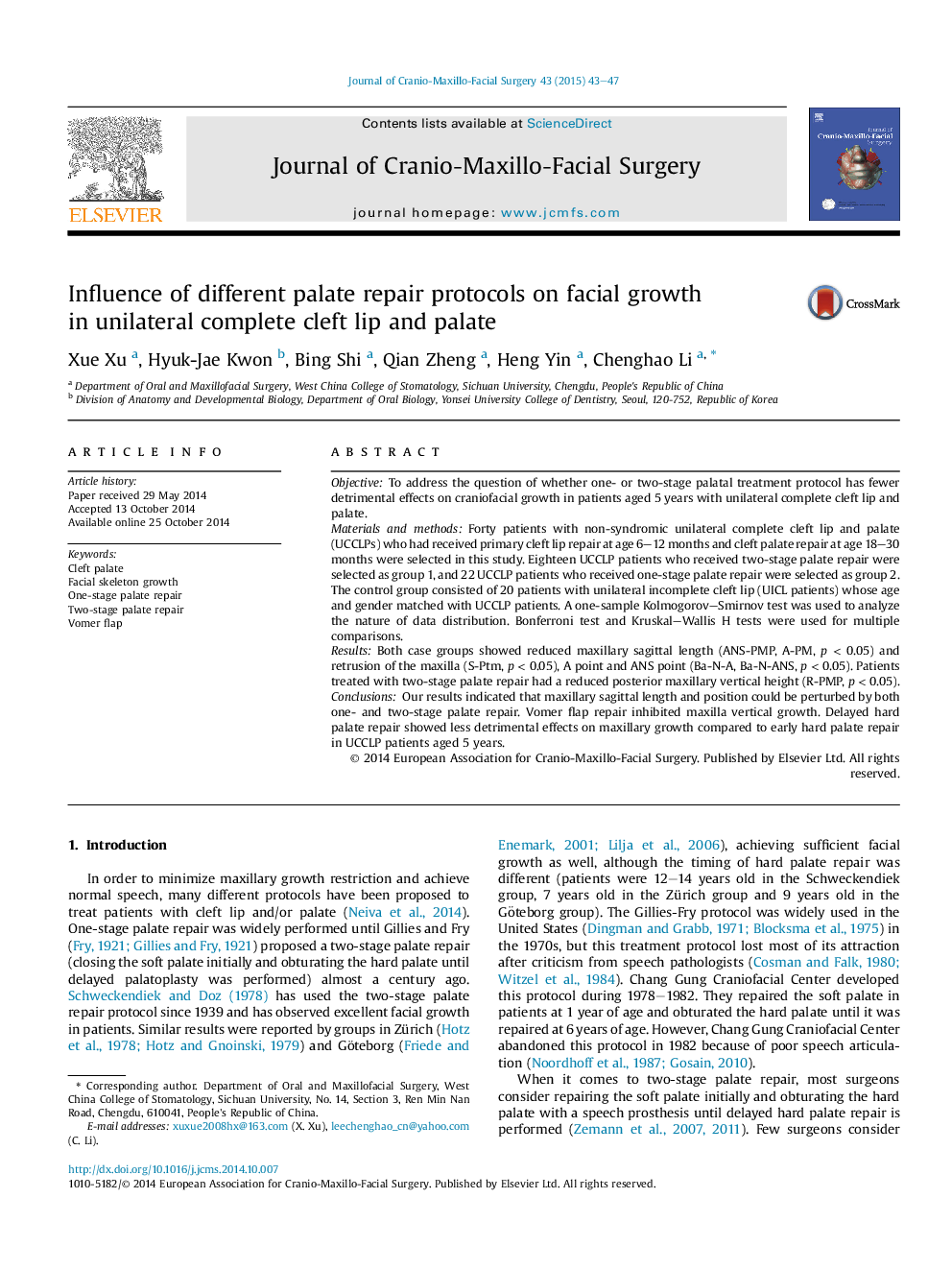| Article ID | Journal | Published Year | Pages | File Type |
|---|---|---|---|---|
| 3142841 | Journal of Cranio-Maxillofacial Surgery | 2015 | 5 Pages |
ObjectiveTo address the question of whether one- or two-stage palatal treatment protocol has fewer detrimental effects on craniofacial growth in patients aged 5 years with unilateral complete cleft lip and palate.Materials and methodsForty patients with non-syndromic unilateral complete cleft lip and palate (UCCLPs) who had received primary cleft lip repair at age 6–12 months and cleft palate repair at age 18–30 months were selected in this study. Eighteen UCCLP patients who received two-stage palate repair were selected as group 1, and 22 UCCLP patients who received one-stage palate repair were selected as group 2. The control group consisted of 20 patients with unilateral incomplete cleft lip (UICL patients) whose age and gender matched with UCCLP patients. A one-sample Kolmogorov–Smirnov test was used to analyze the nature of data distribution. Bonferroni test and Kruskal–Wallis H tests were used for multiple comparisons.ResultsBoth case groups showed reduced maxillary sagittal length (ANS-PMP, A-PM, p < 0.05) and retrusion of the maxilla (S-Ptm, p < 0.05), A point and ANS point (Ba-N-A, Ba-N-ANS, p < 0.05). Patients treated with two-stage palate repair had a reduced posterior maxillary vertical height (R-PMP, p < 0.05).ConclusionsOur results indicated that maxillary sagittal length and position could be perturbed by both one- and two-stage palate repair. Vomer flap repair inhibited maxilla vertical growth. Delayed hard palate repair showed less detrimental effects on maxillary growth compared to early hard palate repair in UCCLP patients aged 5 years.
